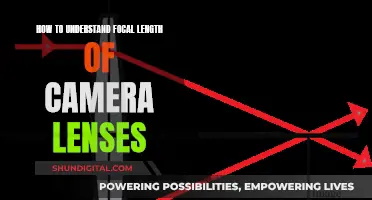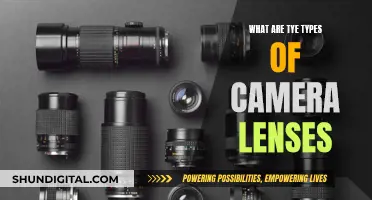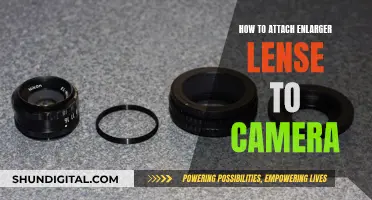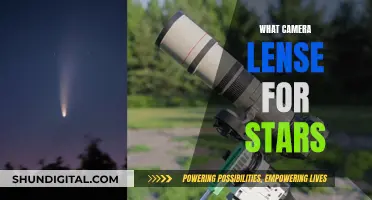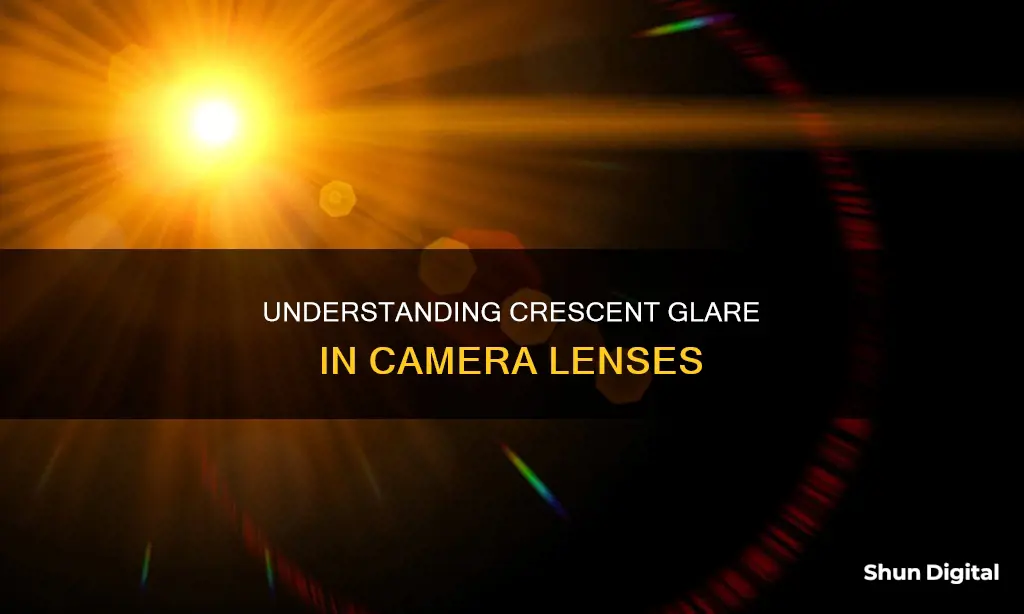
Lens flare, or crescent glare, is a common issue in photography and videography. It occurs when light from a bright source, such as the sun, reflects off the glass surfaces or lens elements of the camera lens, creating unwanted objects in images. This effect can drastically reduce image contrast and add semi-circular halos or ghosts of various colours and intensities. While it is often considered undesirable, lens flare can also be used creatively to add artistic elements to images and boost the visual experience of the viewer.
| Characteristics | Values |
|---|---|
| Cause | A bright light source, such as the sun, shining directly into the lens |
| Type of light source | Natural (e.g. sun) or artificial (e.g. streetlights) |
| Appearance | Polygonal shapes, bright streaks, semi-circular halos, haze, or a washed-out look |
| Impact on image | Reduced contrast and colour saturation, added light, and reduced image quality |
| Lens type | Lenses with a large number of elements (e.g. zoom lenses) are more susceptible |
| Lens coating | Anti-reflective coatings can help minimise flare |
| Lens hood | A lens hood can help block stray light and reduce flare |
| Angle of light | Adjusting the angle of the camera relative to the light source can minimise flare |
| Artistic effect | Lens flare can be used creatively to add drama or a cinematic quality to images |
What You'll Learn

Lens flare is caused by a bright light source
Lens flare is a common issue in photography and videography, and is caused by a bright light source, such as the sun or artificial light. When light rays from these sources directly hit the front element of a camera lens, they reflect and bounce off different lens elements, the diaphragm, and even the sensor, potentially degrading image quality and creating unwanted objects in images. This effect can drastically reduce image contrast by introducing haze in different colours, and it can also add circular or semi-circular halos, or "ghosts", and even oddly-shaped semi-transparent objects of various colour intensities.
Lens flare can occur when a bright light source is within the image frame, or simply when it hits the front element of a lens without being in the image. Depending on the position of the light source, it can result in a lot of haze and a lack of contrast, or it can create orbs and polygon artefacts scattered throughout the image, semi-round shapes with rainbow colours, or a combination of these effects. This happens due to internal reflections that take place inside the lens and even between the imaging sensor and the lens.
There are two types of lens flare: veiling flare and ghosting flare. Veiling flare occurs when a bright light source is outside the lens angle of view and absent from the image, but its light rays still reach the front element of the lens. This results in noticeable haze and a lack of contrast, where dark areas of the frame become brighter with bleeding colours and appear washed out. Ghosting flare represents all the artefacts that are visible in the image, whether they are reflections of the bright source or shapes that are similar to the lens diaphragm.
Lens flare is not always undesirable and is sometimes used creatively to add artistic elements to images. It is often deliberately added to movies and computer games to add a sense of realism and boost the viewer's visual experience.
Lens Compatibility: EF-S Cameras and EF Lenses
You may want to see also

Reflections within the lens
The more lens elements a camera lens has, the more susceptible it is to lens flare. This is because there are more surfaces for the light to reflect off. Zoom lenses, for example, tend to have more lens elements and are therefore more prone to lens flare than fixed focal length or prime lenses. In addition, the coatings on the lens surfaces can also contribute to lens flare, with different coatings producing different coloured flares.
Lens flare can manifest in several ways. It can appear as polygonal shapes, bright streaks, or a washed-out look across the image, known as veiling flare. The spatial distribution of the lens flare typically takes the form of starbursts, rings, or circles in a row across the image. The specific pattern depends on the shape of the lens aperture. For example, a lens with a 6-bladed aperture will often produce a hexagonal lens flare pattern.
Rebel XTi EOS Lenses: Compatible Cameras for You
You may want to see also

The number of lens elements
Lens flare is a phenomenon that occurs when non-image-forming light enters the lens and reflects off the various elements within the lens system before reaching the camera's sensor or film. This results in unwanted artefacts in the final image, such as polygonal shapes, bright streaks, or a washed-out appearance.
Lenses with a larger number of elements, such as zoom lenses, tend to be more susceptible to lens flare. This is because each additional lens surface provides an opportunity for light to reflect and scatter within the lens. These reflections can then become visible as flare artefacts in the image, reducing contrast and colour saturation.
The total number of ghosting artefacts, or "ghosts", in an image is directly related to the number of lens elements. Photographers have observed that the more elements a lens has, the more ghosts will appear. This is a crucial consideration when trying to minimise lens flare, especially when using complex zoom lenses with numerous elements.
To reduce the likelihood and severity of lens flare, photographers often opt for prime lenses, which have simpler optical formulas and fewer lens elements compared to zoom lenses. Additionally, using lens hoods, high-quality lenses with anti-reflective coatings, and adjusting the angle of the camera relative to the light source can help mitigate the impact of lens flare.
While lens flare is often considered undesirable, it can also be used creatively to add artistic elements to images, enhance the quality of the picture, or evoke a sense of drama.
Choosing Camera Lenses: No Face Distortion, Just Flawless Photos
You may want to see also

Lens hoods can prevent lens flare
Lens hoods are an essential accessory for any photographer's camera bag. They are designed to block or reduce the amount of lens flare and glare in your photos by acting as a visor for your lens.
Lens flare is caused by light scattering within the lens system, often in response to a bright light source such as the sun. This can result in a washed-out look, with reduced contrast and colour saturation, and the appearance of light reflecting off the glass elements within the lens.
Lens hoods prevent this by creating a shadow over the front element of the lens, blocking light from hitting it. This helps to maintain the contrast and saturation of your images, resulting in more vibrant colours and enhancing overall image quality.
Lens hoods also offer physical protection for the front element of your lens. They can help prevent accidental bumps, scratches, fingerprints, or damage from rain, snow, or falling debris.
There are two main types of lens hoods: cylindrical and petal (or tulip). Cylindrical lens hoods are long and accompany prime or telephoto lenses. Petal lens hoods, on the other hand, are shorter and have curved notches designed to block out light while maximising the frame size offered by wide-angle lenses and full-frame camera sensors.
It is important to note that lens hoods should not be used in all situations. For example, if you are trying to create a flare effect in your photo, you may want to remove the lens hood. Additionally, in very low-light conditions, the lens hood may block some of the available light.
Overall, lens hoods are a valuable tool for photographers, helping to improve image quality and protect lenses from damage.
Why Are Camera Lenses Round?
You may want to see also

Lens coatings can reduce flare
Lens coatings can significantly reduce lens flare in images. While lens flare can be a desired effect in some images, it is often unwanted. Lens flare is caused by light reflecting and bouncing off different elements of the lens, which can degrade image quality and create unwanted objects in images.
Lens flare is typically caused by a bright light source, such as the sun, and can result in haze/lack of contrast, orbs, and polygon artifacts scattered throughout the image. This happens due to internal reflections within the lens and even between the imaging sensor and the lens.
High-quality, pro-grade lenses often come with coating technologies that help reduce or eliminate flare issues. These coatings are designed to minimise internal reflections and reduce the amount of light entering the lens. The fewer reflections that occur within the lens, the less lens flare will show up in images.
In addition to lens coatings, there are other ways to reduce lens flare. This includes using a lens hood, which blocks direct sunlight rays from reaching the front element of the lens. Another method is to use prime lenses instead of zoom lenses, as they have simpler optical formulas and fewer optical elements, resulting in less flare.
By understanding the causes of lens flare and the ways to reduce it, photographers can better control the final image and create the desired effect.
The Ultimate Guide to Listing Camera Lenses Like a Pro
You may want to see also
Frequently asked questions
Crescent glare, or lens flare, is created when non-image-forming light enters the lens and subsequently hits the camera's film or digital sensor.
Crescent glare is caused by a bright light source, such as the sun, shining directly into the lens.
Crescent glare will appear as a characteristic polygonal shape with sides that depend on the shape of the lens diaphragm. It will lower the overall contrast of a photograph and often appear as a haze or a "washed out" effect.
You can try using a lens hood to avoid extra scattering light, or use lenses less susceptible to flare, like prime lenses. You can also try to block the light source or adjust the angle of the camera to the light source.
Yes, crescent glare or lens flare is often deliberately used to invoke a sense of drama or to enhance the artistic meaning of a photo. It can add a sense of realism to an image, implying that it is an unedited original photograph.


